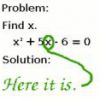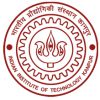 30
30I'll give hints only ---
1) a) By the time we reach the nth bracket, 1+2+3+...+(n-1) terms would have been used.
First term of nth bracket= n(n-1)2+1
b) Apply the previous logic here too.
2) arrange it like this =\begin{matrix} 1 & 0 &0 \\ 1& 0 & 1\\ 1& 0 & 2\\ . & . & .\\ 9&9 & 9 \end{matrix}
Now count how many times each digit appears in hundredth, tens and units places. Its not too difficult and the result will be symmetric for all digits 1-9. You dont need to rack your brains for 0 because it doesn't add to the sum.
I think the answer is 12600
3)
\begin{align*} S &=1+ \frac{1}{2}-\frac{1}{4}-\frac{1}{8}+\frac{1}{16}...\\ &=\left(1-\frac{1}{4}+\frac{1}{16}-\frac{1}{64}+... \right) + \left(\frac{1}{2}-\frac{1}{8}+\frac{1}{32}-\frac{1}{128}+... \right) \end{align*}
 1
1s=1+2*2+3*22......100*299
2s= 2+2*22+3*23....100*2100
s-2s=1+2+22+23.......-100*2100
-s=1+2100-12-1-100*2100
s=99*2100
 262
262take S, then take 2S and then subtract them , then just normal Gp
 7
7Find S=1+2x2+3x22+4x23.............100x299.
S means to find the sum.
x means to multiply.
 11
11bc,ca and ab are in AP..:)
 7
71)Find the sum of the terms in th nth bracket:
a))(1), (2,3), (4,5,6), (7,8,9,10) ........
b)) (12) (22,32) (42,52,62).......
2)Find the sum of the sum of the digits of all 3 digit nos.
3)Find S=1+1/2-1/4-1/8+1/16+1/32-1/64-1/128..................
 11
11@jit-
The series goes like this 2,12,36,80...till n..which follows the form of n3+n2
13+12=2.
23+22=12.
33+32=36
.
.
.
.
n3+n2
Hence the sum of the series will be equal to the Σ n3 +Σ n2..
Hope u get it now..:):):)
 1
1@khilen how is the series of the form n3+n2?
 1
1if a,b,c are in hp
then 1 ,1 ,1 are in A.P
a b c
by multiplying all three wth abc we get bc,ca and ab → which implies bc ca and ab r in A.P;-)
 11
11The series is in the form n3+n2
[n(n+1)2]2 +n(n+1)(2n+1)6
n(n+1)2{n(n+1)2 + 2n+13} Answer..:)
 11
112)
1a,1b,1care in AP
1b-1a=1c-1b
a-bab=b-cbc
ca-cb=ab-ac
therefore bc,ca and ab are in AP..:)